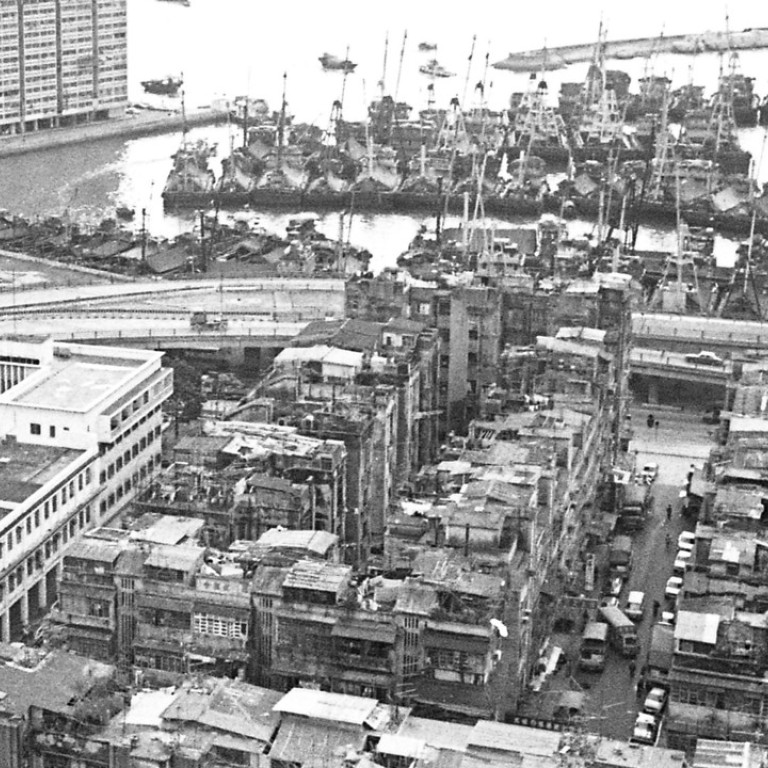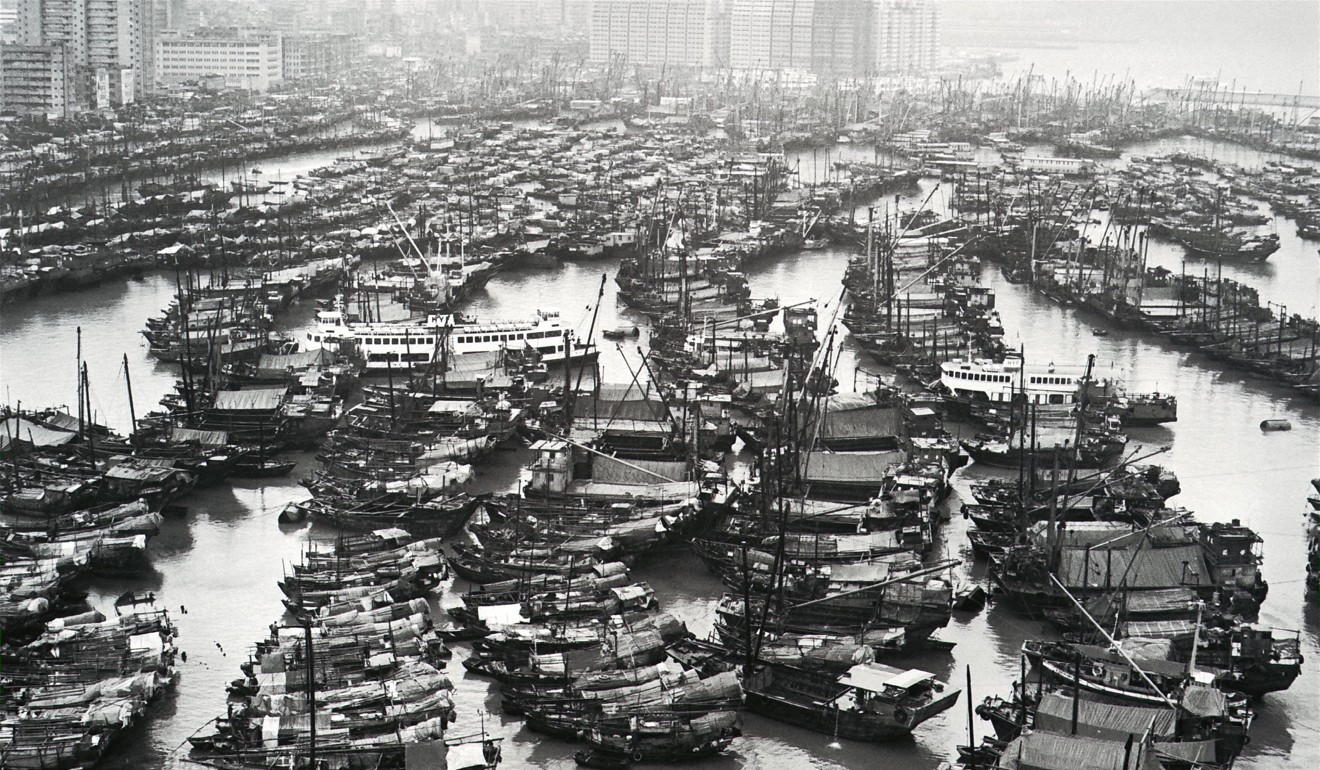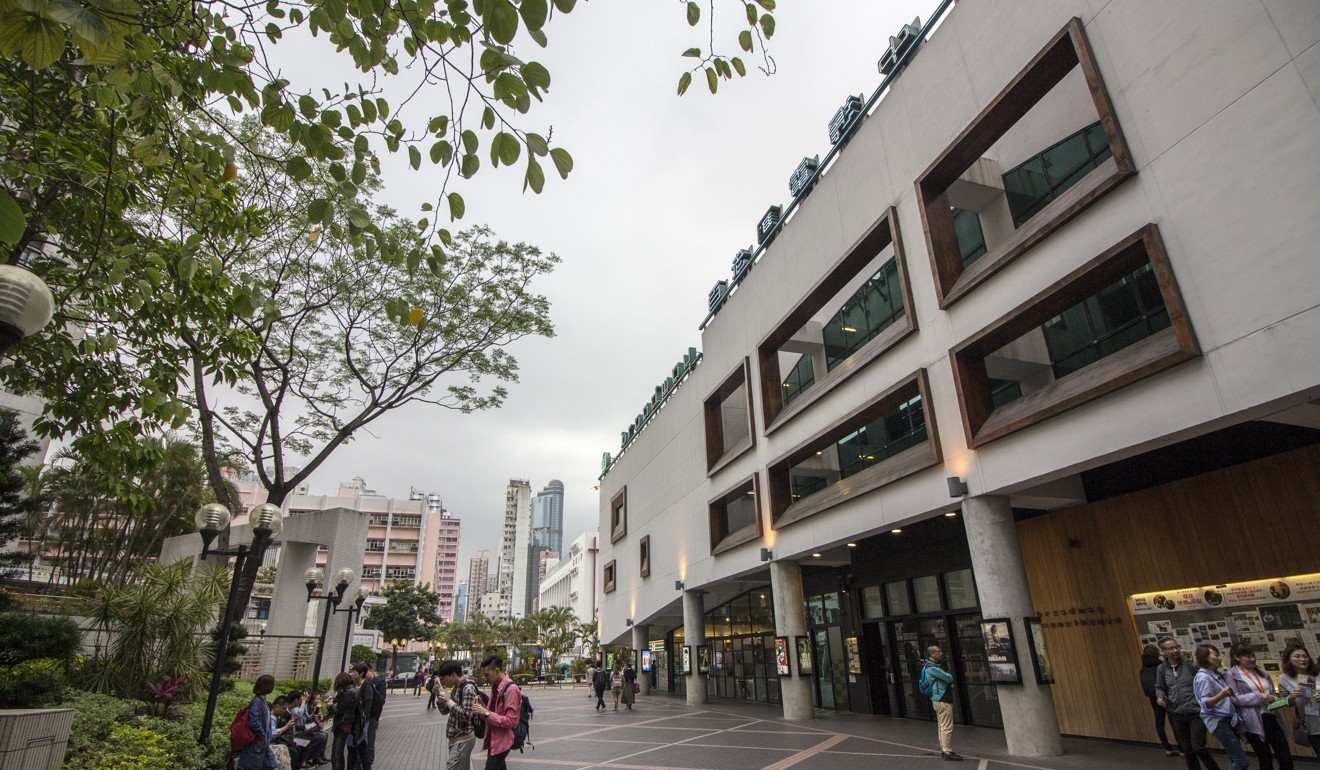
From bastion of working-class Hong Kong to art-house magnet for film lovers, how Six Streets in Yau Ma Tei renewed itself
Tenements crammed with refugees from communist China, where children played on the streets while their parents assembled plastic flowers, made way for Prosperous Garden housing estate, including Broadway Cinematheque
Yau Ma Tei is one of Hong Kong’s oldest and most diverse neighbourhoods – and in a series of stories we explore different facets of its history.
As daylight recedes into murky dusk, the lonely mating cry of the Asian koel echoes between the towers of Prosperous Gardens. Children run through the courtyard, weaving between film-goers making their way to the Broadway Cinematheque, which for a time was Hong Kong’s only art house cinema.
It is the kind of scene that would have pleased Hong Kong’s 1970s-era town planners, who decided that jam-packed Yau Ma Tei needed a facelift. When the government introduced plans for Prosperous Garden in 1985, it noted that the redevelopment scheme’s 1,600 flats would occupy just 20 per cent of the space in Yau Ma Tei’s so-called Six Streets, leaving the rest for public open space.
Hong Kong district history: Yau Ma Tei, frenetic 24/7 urban centre that is unlike anywhere else in the city
The Six Streets (Public Square Street, Ching Ping Street, Tung Kun Street, Lee Tat Street, Cheung Shui Street, and a section of Canton Road) were classic working-class Hong Kong: overcrowded, a little seedy but undeniably lively.

Located next to the Yau Ma Tei Typhoon Shelter (since moved westwards because of reclamation), the area was first developed in the early 20th century, and by the 1950s the Six Streets were lined with five-storey tong lau (tenement buildings), whose 600-square-foot flats had been subdivided to accommodate part of the huge influx of working-class refugees from China.
About 10,000 people lived in the area’s 652 housing units – roughly 15 people per flat.

Ng Kin-sun, a retired social worker who was interviewed by the HK Memory Oral History project, remembers the area was full of small, family-run workshops. His own family made a living by outsourcing work from them.
“We assembled plastic flowers, painted dolls and cut thread ends,” he said. Downstairs, children roamed freely, playing marbles on manhole covers. “We didn’t have much space inside, so we spent most of our time in the streets,” said Ng.
The first proposals to knock down the Six Streets came in the late 1970s, just a couple of decades after its tenements were built. Planners saw the overcrowded living conditions in Yau Ma Tei and decided more open space was the answer.
We didn’t have much space inside, so we spent most of our time in the streets
At first, plans called for the Six Streets to be replaced by parks, schools and community facilities, but in 1980, an association of residents from the Six Streets presented their own plan, which would allow them to rebuild their own homes with open space on first-floor podiums. The government rejected this idea, saying the area would still be too densely populated. Residents threatened to take their case to London.
Prosperous Garden was the eventual compromise. When its first phase opened in 1991, the new estate offered subsidised flats for rent and sale that ranged in size from 355 to 586 square feet. By the time it was competed in 1995, the Post had declared it a hit thanks to strong demand for its affordable flats – priced at an average of less than HK$4,000 per square foot.

Broadway Cinematheque opened in 1996 in the commercial block that flanks Prosperous Garden’s central plaza. Its goal was to offer film-goers an alternative to mainstream fare.
“In Hong Kong, most of the films are commercial Hollywood or Hong Kong productions and there are not enough opportunities to see ‘artistic’ films – French movies, Japanese movies, Iranian movies and the like,” said Freddie Wong, the business development manager at Edko Films, which runs the Broadway chain of cinemas.

There were two other art house cinemas in Hong Kong at the time, Columbia Classics and Cine Art House, but the Cinematheque was bigger than either of them. It outlasted them, too (Columbia Classics shut in 1997; Cine Art closed in Wan Chai in 2006, reopening three years later in Ngau Tau Kok).
Stories behind Hong Kong districts: Tsuen Wan – from Hakka farms to textile mills to a post-industrial future
Until the recent opening of the art house cinema Movie Movie in Taikoo Shing – also run by the Broadway chain – “it was the last and only bastion of art or alternative film exhibitions in Hong Kong”, says film critic Elizabeth Kerr.
She finds herself at the Cinematheque two or three times a month, depending on what’s showing. “If it's Antonioni I'm there every twice every Sunday for the month, assuming I can get tickets. If it's Wes Anderson – yeah, not so much.”

While Wong may have equated Hong Kong and Hollywood movies back in the mid-1990s, these days it’s a different story. The collapse of the local film industry means the Cinematheque is one of the few places to find a Hong Kong movie that isn’t a China co-production. That is particularly true of Hong Kong films that deal with sensitive issues.
Stories behind Hong Kong districts: Mei Foo Sun Chuen, where middle-class dreams began
“If anyone is going to have the guts to play something remotely controversial it's Cinematheque, because the rest are getting skittish about content and are just trying to pay their exorbitant rents.” The Six Streets may have vanished, but Prosperous Garden remains as quintessentially Hong Kong as ever.

